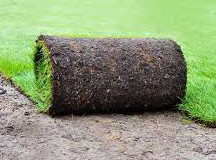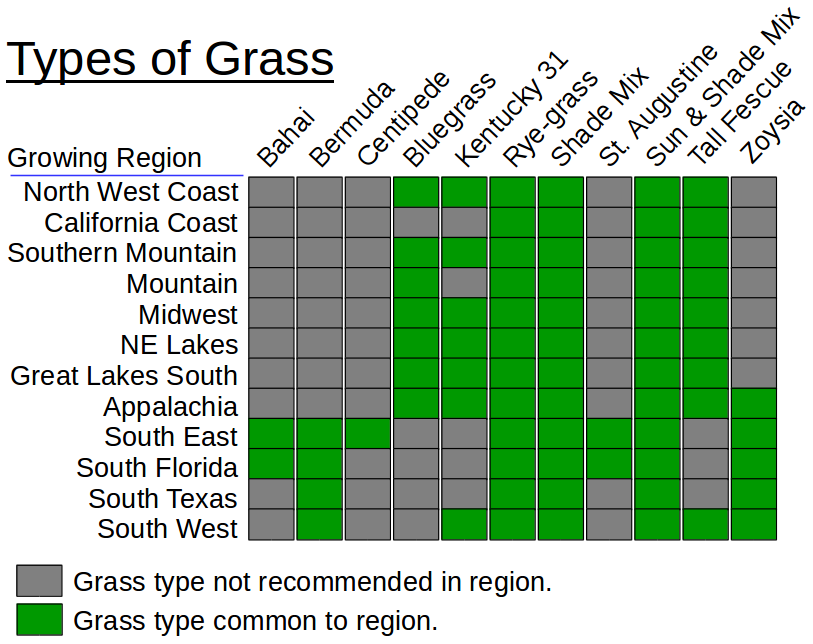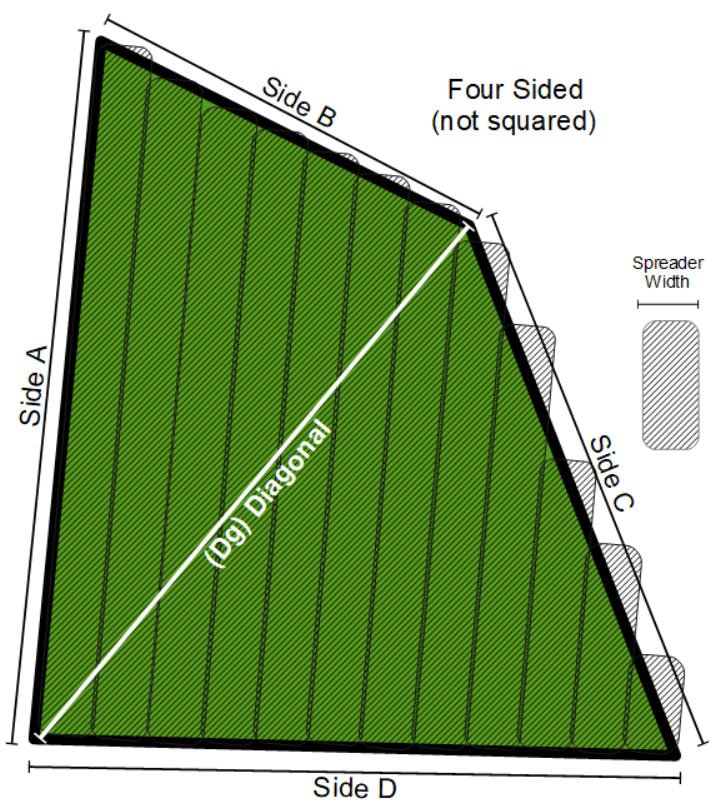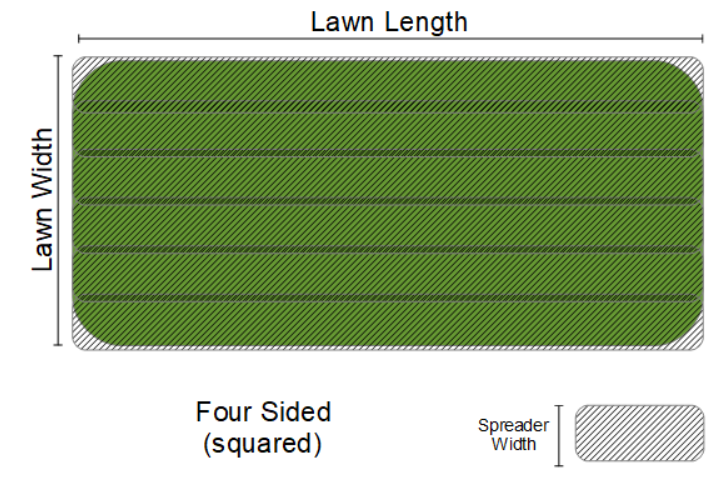The New Sod Four Sided calculators computes the number of pieces of sod needed to cover a four sided (not squared) shaped area such as a yard or field.
INSTRUCTIONS: Choose units and enter the following:
- (A) Size (Area) of Lawn
- (L) Length of Sod Pieces
- (W) Width of Sod Pieces
Sod Needed (nS): The calculator computes how many piece of sod needed to cover your area. It also returns the area covered in square feet and acres. However, these can be automatically converted to compatible units via the pull-down menus.
The Math / Science
The number of sod pieces for an area is:
nS = A / (L*W)
where:
- nS = Number of Sod Pieces
- A = Area in new sod
- L = Length of sod pieces
- W = Width of sod pieces
Sod Information
Sod is the top layer of ground covered in grass. This is also known as turf. Sod  is used in many homes as the ground cover for yards, often referred to as lawn. Sod can be planted from grass seed and requires coverage while it grows in the form of straw, but sod also can be purchased in segments or rolls to place on top of the ground. Such sod is grown on sod farms. According the to the USDA, there are over 1,400 sod farms in the United State with over 368k acres in sod production.
is used in many homes as the ground cover for yards, often referred to as lawn. Sod can be planted from grass seed and requires coverage while it grows in the form of straw, but sod also can be purchased in segments or rolls to place on top of the ground. Such sod is grown on sod farms. According the to the USDA, there are over 1,400 sod farms in the United State with over 368k acres in sod production.
Common grasses used for sod include:
- Fescue
- Bermuda Grass
- Bluegrass
- St. Augustine Grass
- Centipede Grass

Common Sod Units: Sod comes in several different standard units including:
- 5' x 24" roll (MOST COMMON)
- 16"x24" sod pieces
- 50 square yard sod pallets
- 12" x 40" roll
- 18" x 60" roll
- 4' x 60' large roll
Lawn Care Calculators
Mowing Calculator: Estimates the distance walked, area covered, calories burned mowing and time required to mow an area of grass based on mower cutting deck width, speed and whether its a push mower or riding mower.
- Mowing Triangle: Mowing a triangle shaped area.
- Mowing Rectangle: Mowing a rectangle shaped area.
- Mowing 4 Sided non-Squared: Mowing a four sided area that does not have square corners.
- Mowing 5 Sided: Mowing a five sided area.
- Calories Burned Mowing Grass: Estimates the calories burned mowing (push or riding) based on person's weight and time spent mowing grass.
- Lawn Spreader Calculator: Computes the number of bags of lawn treatment (grass seed, weed killer, lawn fertilizer) are needed for a lawn based on the manufacturer recommended area of coverage per bag and the area of the lawn.
- Lawn Spreader Triangle: Computes the number of bags of lawn treatment needed for a triangular lawn based on the manufacturer recommended area of coverage per bag and the length of the three sides of the lawn.
- Lawn Spreader Rectangle: Computes the number of bags of lawn treatment needed for a rectangular lawn based on the manufacturer recommended area of coverage per bag and the length and width of the lawn.
- Lawn Spreader 4 Sided (non-Square): Computes the number of bags of lawn treatment (grass seed, weed killer, lawn fertilizer) needed for a four sided lawn based on the manufacturer recommended area of coverage per bag and the length of the four sides and diagonal of the lawn.
- Lawn Spreader 5 Sided:: Computes the number of bags of lawn treatment (grass seed, weed killer, lawn fertilizer) needed for a five sided lawn based on the manufacturer recommended area of coverage per bag and the length of the five sides and two diagonals of the lawn.
- Grass Seed Calculations use SPREADER calculators above with the grass seed specifications from the manufactures.
- New Sod Calculator: Computes the number of sod pieces needed for an area based on the size of the pieces of sod.
 New Sod Triangle: Computes the number of pieces of sod needed to cover a triangular shaped area such as a yard or field.
New Sod Triangle: Computes the number of pieces of sod needed to cover a triangular shaped area such as a yard or field.- New Sod Rectangle: Computes the number of pieces of sod needed to cover a rectangular shaped area such as a yard or field.
- New Sod 4 Sided: Computes the number of pieces of sod needed to cover a four sided (not squared) shaped area such as a yard or field.
- New Sod 5 Sided: Computes the number of pieces of sod needed to cover a five sided shaped lawn area such as a yard or field.
- New Sod Circle: Computes the number of sod pieces required to cover the given diameter of a circle.
- New Sod Oval: Computes the number of sod pieces required to cover an oval. It also provides the oval area and perimeter.
- Straw Cover Area Calculator: Computes the number of regular square-bales of straw needed to cover an area such as a field or garden for new grass seed. The common bales are 2 string square bales of 14"x18"x"36" inches weighing between 40lbs and 60 lbs.
- Bales of Straw over Rectangle: compute the number of regular square-bales of straw needed to cover new seed on a rectangle area (length by width). .
- Market Price for Bales of Straw: Returns recent market survey on the price of straw bales.

